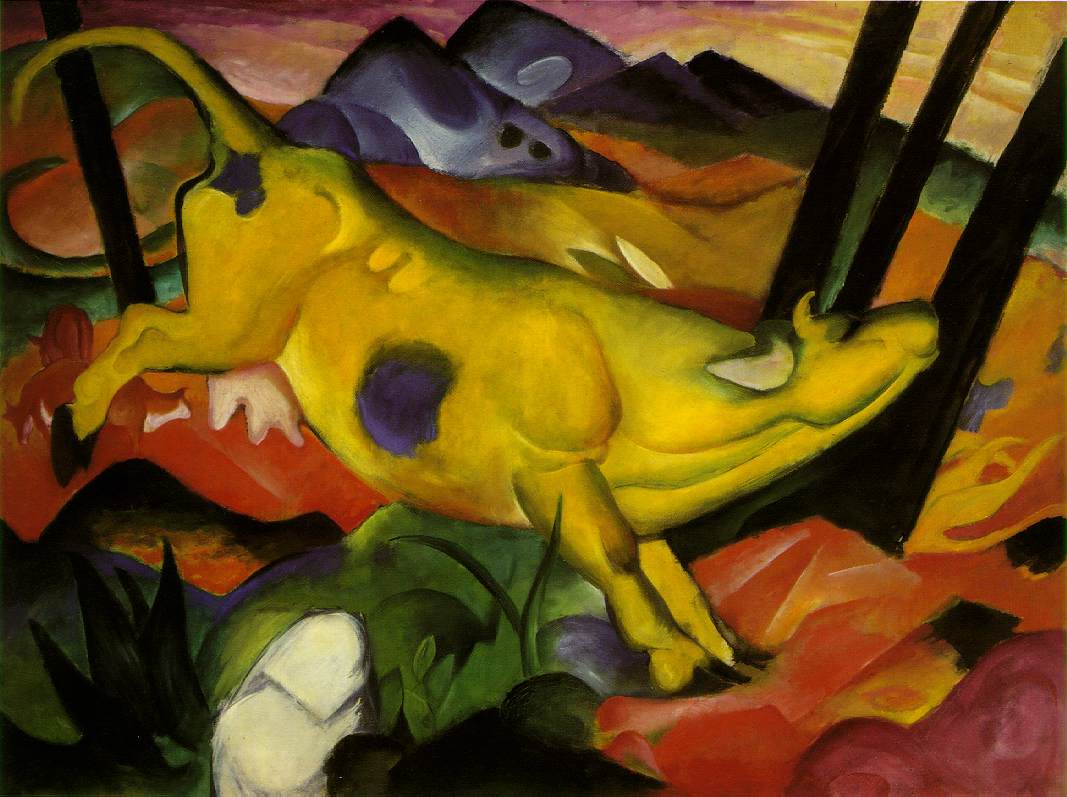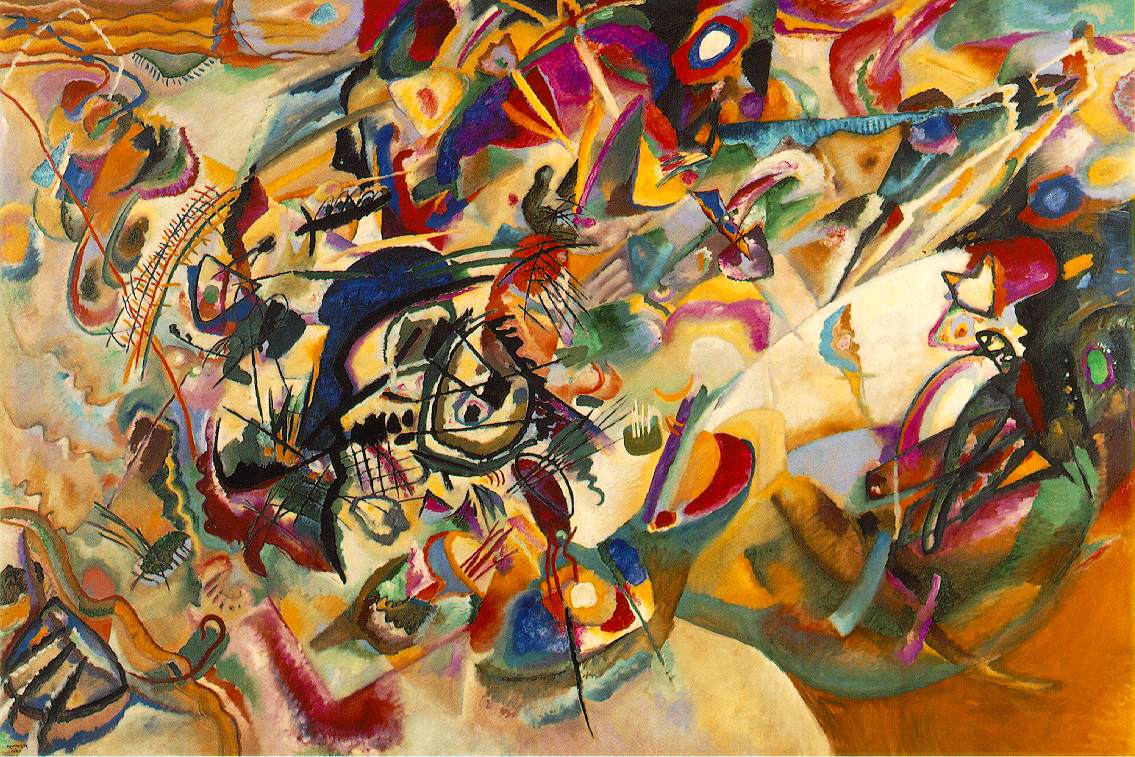GERMAN EXPRESSIONISM
(where ever a word is highlighted in dark orange it is a clickable link to take to more in depth information)
(where ever a word is highlighted in dark orange it is a clickable link to take to more in depth information)
When I looked up quotes from German Artists recently I read a bit further and was amazed by the breadth of the German Art Movements. I decided I would do more research and do a series of articles about the different movements.
I chose to begin with Expressionism only because it has always fascinated me through the years. There will be a series of links available to you throughout the series, when you see a highlighted word click on it and it will lead you to more in depth information about that subject or person. My major was not art history in college, but as all art students I did take course work. The professor taught by memorization not interest...with a poor memory and a fascinating subject presented in a boring manor I did not excel. I took art history again on a graduate level with art history graduate students...though I was not one....and made A's because of a wonderful professor and art history presented in an interesting way with stories of artist lives, why art movements happened and how they were connected to the times and events they happened in. And from there on I decided that is how I would teach art history to young children, they would learn about the artists and their life, they would learn about the time period, the culture, the foods, the clothes and why the artist did art the way he or she did....Most often art does not stand alone from a time period it is connected to. It is what is happening in the world, and in a society that influence the creators and thinkers of a given time or era..... that is when art movements are formed...so we begin with German born movement of Expressionism.
War and hard economic times scar people and effect the society in which they happen. Such it was with German Expressionism. The movement is born out of these times when people felt badly about the world they lived in and the harshness of what they experienced and saw around them. Artists are the conduits, the absorbers, the sponges of this universe of feelings and emotions. The frustration often becomes an explosion of paint, sculpture, dance, music and film. Angst and a need to express it reflects the artists chaotic creations and philosophies during that time.
Kandinsky, Marc and Klee among others were formidable in the German Expressionist Movement. The expressionist no longer want to show just their impression of things they want to go further and show their feelings expressed in what they are seeing. They were highly influenced by the expressive work of Van Gogh and others. There were three different separate sub groups within the movement. Expressionism became isolated to Germany because of WWI. Freud's philosophies and ideas were also very influential for artists and others at the time. Psychoanalysis of the inner world and dreams offers another way for artists of the time to explore their ideas and feelings. It was cutting edge science at the time, as quantum physics is for us now. It changed the way people could view themselves in relationship to what they were experiencing and even how they related to each other. It is in this way we can get a view of why the artists painted what they did, and why they used the images they did.
Another interesting part of this is that the German Expressionist were ousted by Hitler as degenerative artist. Many fled to New York and Chicago. And because they did much of the work of the German expressionist is in museums and collections in the United States.
If you go to the MOMA(Museum of Modern Art) you will see they have a website devoted to German Expressionism.
Moma(Museum of Modern Art) in New York City has a website dedicated to their comprehensive collection of German Expressionism(click for link)
I chose to begin with Expressionism only because it has always fascinated me through the years. There will be a series of links available to you throughout the series, when you see a highlighted word click on it and it will lead you to more in depth information about that subject or person. My major was not art history in college, but as all art students I did take course work. The professor taught by memorization not interest...with a poor memory and a fascinating subject presented in a boring manor I did not excel. I took art history again on a graduate level with art history graduate students...though I was not one....and made A's because of a wonderful professor and art history presented in an interesting way with stories of artist lives, why art movements happened and how they were connected to the times and events they happened in. And from there on I decided that is how I would teach art history to young children, they would learn about the artists and their life, they would learn about the time period, the culture, the foods, the clothes and why the artist did art the way he or she did....Most often art does not stand alone from a time period it is connected to. It is what is happening in the world, and in a society that influence the creators and thinkers of a given time or era..... that is when art movements are formed...so we begin with German born movement of Expressionism.
War and hard economic times scar people and effect the society in which they happen. Such it was with German Expressionism. The movement is born out of these times when people felt badly about the world they lived in and the harshness of what they experienced and saw around them. Artists are the conduits, the absorbers, the sponges of this universe of feelings and emotions. The frustration often becomes an explosion of paint, sculpture, dance, music and film. Angst and a need to express it reflects the artists chaotic creations and philosophies during that time.
Kandinsky, Marc and Klee among others were formidable in the German Expressionist Movement. The expressionist no longer want to show just their impression of things they want to go further and show their feelings expressed in what they are seeing. They were highly influenced by the expressive work of Van Gogh and others. There were three different separate sub groups within the movement. Expressionism became isolated to Germany because of WWI. Freud's philosophies and ideas were also very influential for artists and others at the time. Psychoanalysis of the inner world and dreams offers another way for artists of the time to explore their ideas and feelings. It was cutting edge science at the time, as quantum physics is for us now. It changed the way people could view themselves in relationship to what they were experiencing and even how they related to each other. It is in this way we can get a view of why the artists painted what they did, and why they used the images they did.
Another interesting part of this is that the German Expressionist were ousted by Hitler as degenerative artist. Many fled to New York and Chicago. And because they did much of the work of the German expressionist is in museums and collections in the United States.
If you go to the MOMA(Museum of Modern Art) you will see they have a website devoted to German Expressionism.
.jpg) |
| Paul Klee/Full Moon |
 |
| Franz Marc/Yellow Cow |
 |
| Wassily Kandinsky |
No comments:
Post a Comment